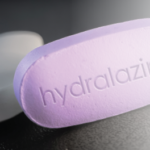Criticisms & Concerns
The FDA worked with ChemoCentryx on its initial trial design. In a briefing document, the FDA noted it had previously shared many concerns with ChemoCentryx. In its pre-meeting recorded presentations and during the meeting itself, FDA representatives voiced strong criticisms of the study, raised questions about data interpretation and repeatedly called many of the results “limited” or “exploratory only.”
Throughout the hearing, the FDA seemed to subtly imply that ADVOCATE was trying to do in one trial something that it believed needed two: one demonstrating the efficacy of avacopan and a second demonstrating its capacity for steroid sparing. Looked at another way, the company was trying to demonstrate efficacy of both remission induction and remission maintenance.
Avacopan, an oral C5a receptor antagonist that selectively blocks the effects of C5a, thus dampening neutrophil attraction & activation, is the first drug to be specifically developed for a vasculitis indication.
One temporary voting member of the Advisory Committee, Sharon Chung, MD, MAS, director of the vasculitis clinic at the University of California, San Francisco, notes these double goals also posed a challenge for the committee in terms of data interpretation.
Dr. Jayne acknowledges the investigators were trying to demonstrate both avacopan’s efficacy and its capacity for steroid sparing. “In a rare disease, there are simply not enough patients to do two parallel trials, and if you are going to do sequential trials in a development program, there’s another four or five years,” he says.
Lack of Rituximab Maintenance Dose
The FDA and some committee members highlighted one key study design issue: No patients received maintenance rituximab therapy. At the time the study was designed, this indication had not been approved by the FDA, although many rheumatologists were already using rituximab in this application.
This was an intentional choice on the part of the company says Dr. Jayne, noting, “if they had redosed with rituximab at six months, … they probably wouldn’t have gotten an efficacy signal,” he explains. “The company was trying to move as close as it could to a true placebo-controlled trial. In that second six months, the steroid dose had been stopped in the steroid limb, and so it was close to an avacopan vs. placebo [trial] for that second part.”
Because the remission maintenance treatment in the rituximab arm does not reflect current standard of care, Dr. Chung notes, she can’t tell her patients how the risk of relapse with avacopan compares with the risk of relapse with rituximab when used for remission maintenance.



